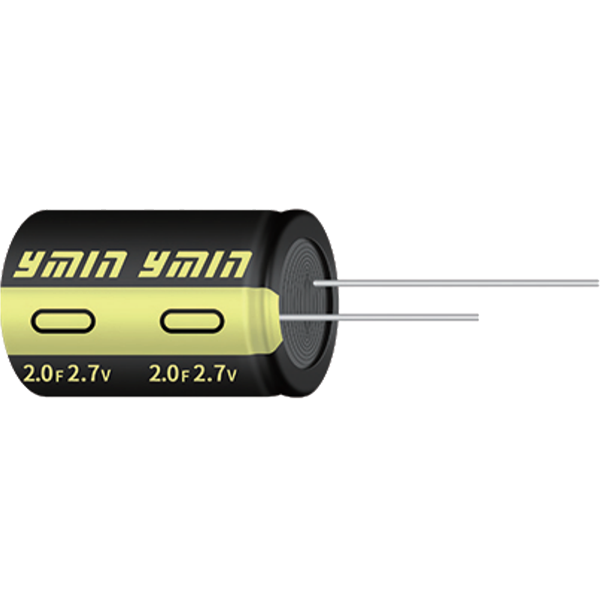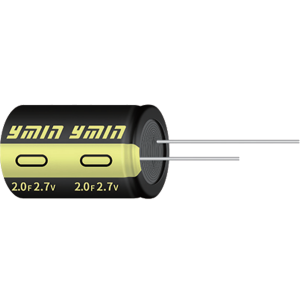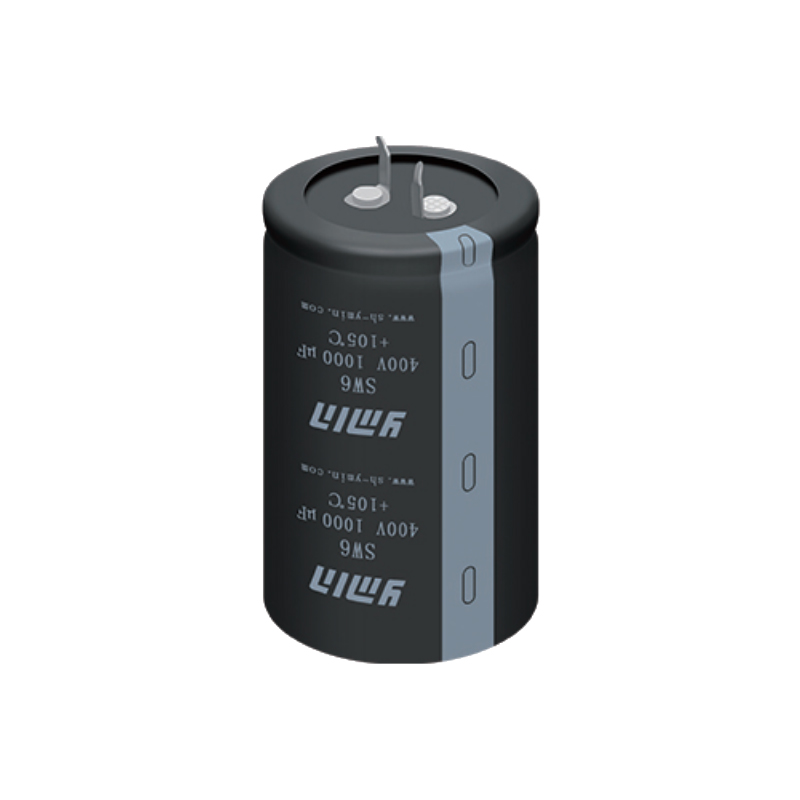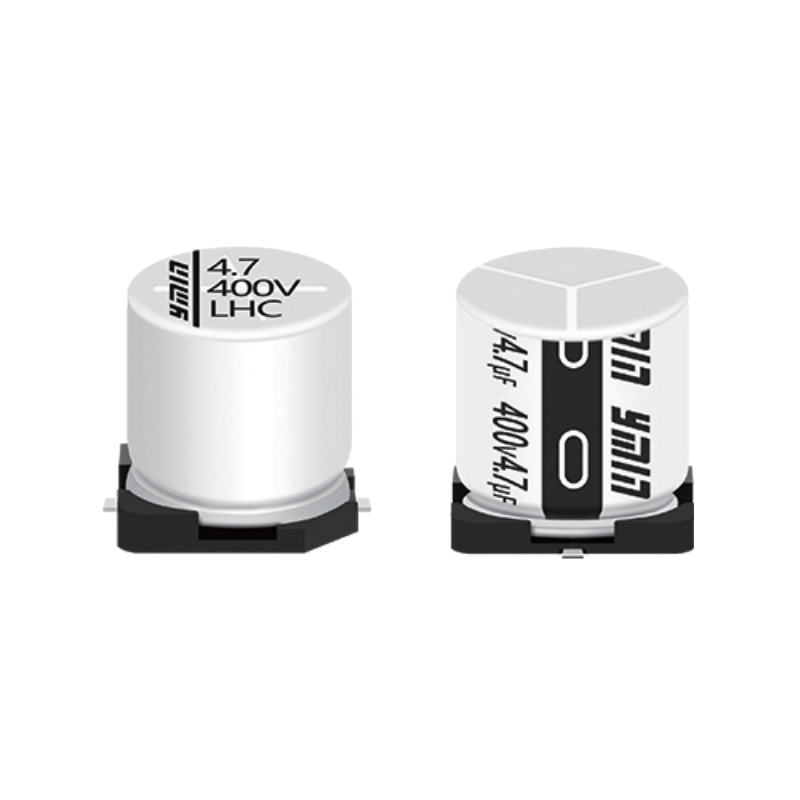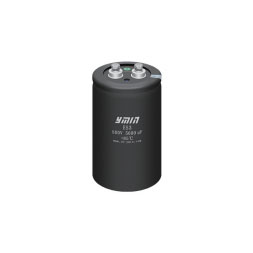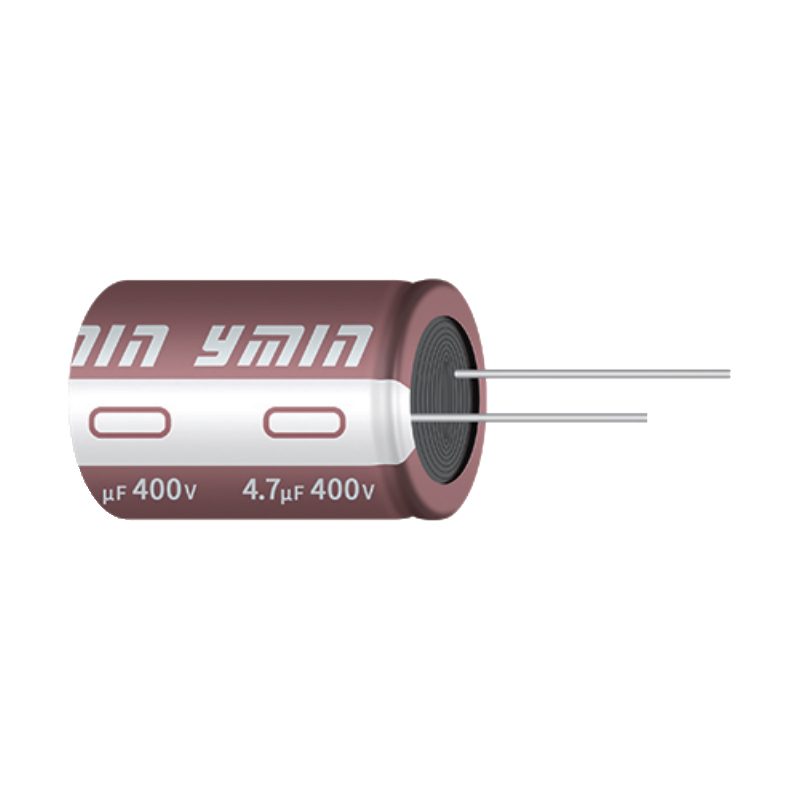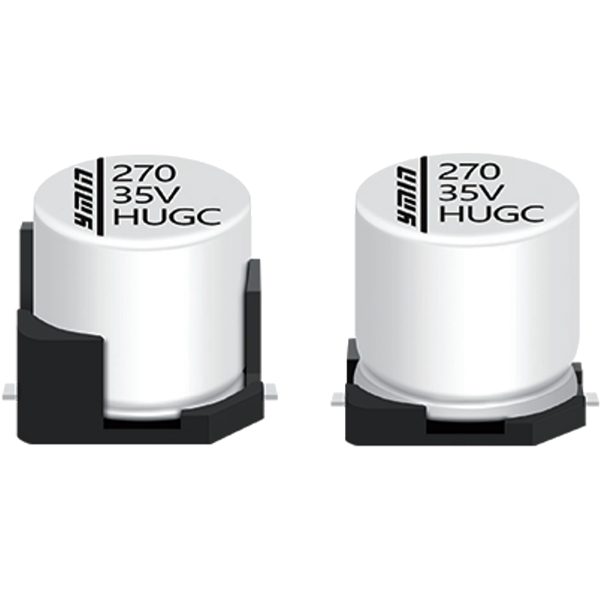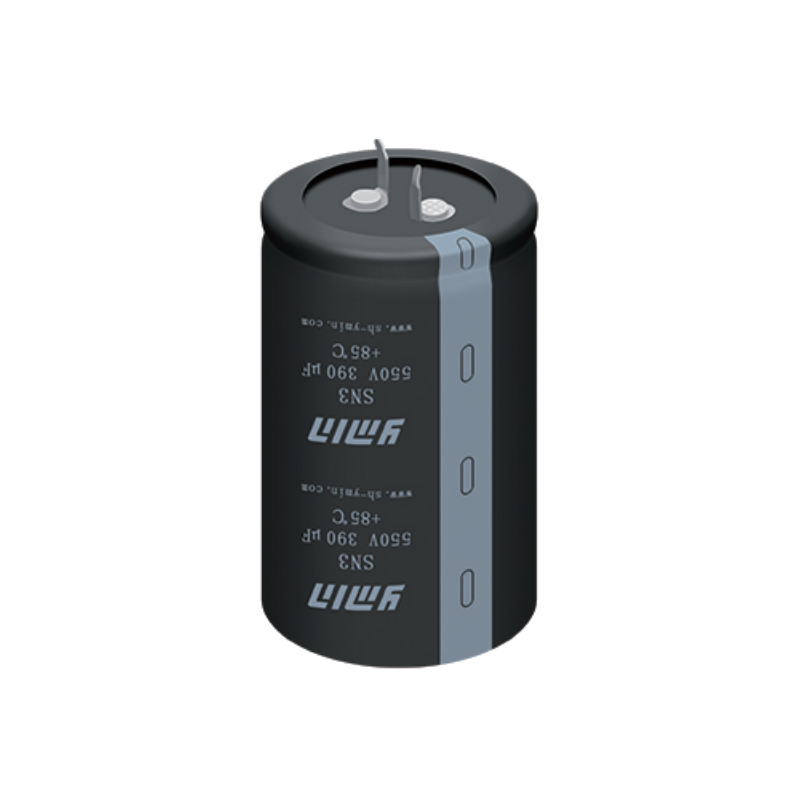Main Technical Parameters
|
project |
characteristic |
||
|
temperature range |
-40~+70℃ |
||
|
Rated operating voltage |
2.7V |
||
|
Capacitance range |
-10%~+30%(20℃) |
||
|
temperature characteristics |
Capacitance change rate |
|△c/c(+20℃)|≤30% |
|
|
ESR |
Less than 4 times the specified value (in an environment of -25°C) |
||
|
Durability |
After continuously applying the rated voltage (2.7V) at +70°C for 1000 hours, when returning to 20°C for testing, the following items are met |
||
|
Capacitance change rate |
Within ±30% of initial value |
||
|
ESR |
Less than 4 times the initial standard value |
||
|
High temperature storage characteristics |
After 1000 hours without load at +70°C, when returning to 20°C for testing, the following items are met |
||
|
Capacitance change rate |
Within ±30% of initial value |
||
|
ESR |
Less than 4 times the initial standard value |
||
|
Moisture resistance |
After applying the rated voltage continuously for 500 hours at +25℃90%R.H, when returning to 20℃ for testing, the following items are met |
||
|
Capacitance change rate |
Within ±30% of initial value |
||
|
ESR |
Less than 3 times the initial standard value |
||
Product Dimensional Drawing

|
LW6 |
a=1.5 |
|
L>16 |
a=2.0 |
| D | 8 | 10 | 12.5 | 16 | 18 | 22 |
| d | 0.6 | 0.6 | 0.6 | 0.8 | 0.8 | 0.8 |
| F | 3.5 | 5 | 5 | 7.5 | 7.5 | 10 |
SDL Series Supercapacitors: Low Internal Resistance, High-Performance Energy Solutions
With increasingly stringent energy management requirements for today's electronic devices, efficient and reliable energy storage components are critical to ensuring system performance. The SDL series supercapacitors, radial-leaded, low-internal-resistance products from YMIN Electronics, offer high-quality energy storage solutions for various industries with their excellent electrical properties, stable performance, and wide environmental adaptability. This article will delve into the technical features, performance advantages, and outstanding performance of the SDL series supercapacitors in practical applications.
Innovative Design and Technical Features
The SDL series supercapacitors utilize an advanced wound structure and low internal resistance design. This innovative architecture achieves excellent electrical performance while maintaining a compact size. The radial-leaded package makes it perfectly compatible with traditional through-hole assembly processes, enabling seamless integration into existing production lines. Product diameters range from 8mm to 22mm and lengths from 11.5mm to 55mm, offering customers a diverse range of options to meet the specific needs of diverse application scenarios.
The lead wires are precisely designed, with a uniform diameter of 0.6mm to 0.8mm, ensuring both sufficient mechanical strength and reliable soldering. The product utilizes a special electrode material and electrolyte formulation to achieve extremely low internal resistance, achieving an ESR as low as 14mΩ, a leading performance among similar products. This low internal resistance design not only improves energy conversion efficiency but also significantly reduces operating temperature rise, enhancing product reliability and service life.
Excellent Electrical Performance
The SDL series supercapacitors offer exceptional electrical performance. With a rated operating voltage of 2.7V and a capacitance range from 1F to 160F, they cover a wide range of application needs. Their equivalent series resistance (ESR) significantly outperforms similar products, with the 100F model boasting an ESR of only 14mΩ and the 160F model boasting an ESR of 12mΩ. This low internal resistance provides strong support for high-power applications.
The product also offers excellent leakage current control, with a minimum leakage current of only 2μA over 72 hours and a maximum of no more than 140μA (for the 160F model). This feature ensures minimal energy loss during standby or storage mode, significantly extending the system's autonomous operation time. After 1000 hours of continuous durability testing, the product maintained a capacitance change rate within ±30% of its initial value, and its ESR was no more than four times its initial nominal value, fully demonstrating its excellent long-term stability.
Environmental adaptability is another outstanding advantage of the SDL series. With an operating temperature range of -40°C to +70°C, it can withstand a variety of harsh environmental conditions.
Wide Applications
New Energy Vehicles and Intelligent Transportation
In electric vehicles, the SDL series supercapacitors provide critical support for intelligent start-stop systems, energy recovery systems, and auxiliary power systems. Their low internal resistance enables instantaneous high current output, meeting the high power requirements during vehicle startup. In hybrid vehicles, the SDL series combines with lithium batteries to form a hybrid energy system, effectively extending battery life and improving system reliability. The product's excellent temperature characteristics allow it to withstand the harsh environment of the vehicle engine compartment, ensuring stable operation in various climates.
Industrial Automation and Smart Manufacturing
In the industrial control sector, the SDL series provides reliable backup power for PLC systems, servo drives, and industrial robots. Its high power density meets the instantaneous high current demands of industrial equipment, ensuring continuous production. In smart warehousing systems, the SDL series powers automated guided vehicles (AGVs), and its rapid charge and discharge characteristics significantly improve equipment efficiency. Its seismic performance and environmental adaptability fully meet the stringent requirements of industrial applications.
New Energy and Smart Grid
In solar and wind power generation systems, the SDL series supercapacitors smooth power fluctuations and improve power quality. Their fast response effectively compensates for the intermittent nature of renewable energy generation. In the smart grid sector, the SDL series supports power quality control devices, improving grid stability and reliability. Its long lifespan perfectly matches the service life requirements of power equipment, significantly reducing maintenance costs.
Communications Infrastructure
In 5G base stations, data centers, and network equipment, the SDL series supercapacitors provide backup power and instantaneous power support. Their low internal resistance meets the sudden high current demands of communications equipment, ensuring stable signal transmission. In edge computing devices, the SDL series provides reliable energy for data processing and storage, preventing data loss caused by sudden power outages.
Consumer Electronics and Smart Devices
In high-end consumer electronics, the SDL series provides energy for digital products, smart home devices, and wearables. Its compact size and excellent performance make it particularly suitable for space-constrained applications. In drones, the SDL series provides backup power for flight control systems and cameras, ensuring flight safety. Its environmentally friendly features meet the sustainable development requirements of modern electronic products.
Technical Advantages and Innovative Features
Ultra-Low Internal Resistance Design
The SDL series utilizes advanced materials and processes to achieve extremely low internal resistance. This innovative design significantly reduces energy loss and improves system efficiency, making it particularly suitable for high-power applications.
High Power Density
The product offers excellent power output capability, capable of delivering high current instantaneously. Low internal resistance ensures efficient energy conversion, providing reliable power for devices.
Long Cycle Life
The SDL series supports tens of thousands of charge and discharge cycles, far exceeding the lifespan of traditional batteries. This feature significantly reduces the lifecycle cost of the device and improves system economics.
Wide Temperature Operating Range
The product maintains excellent performance across a wide temperature range of -40°C to +70°C. This wide temperature range enables it to adapt to a variety of harsh environmental conditions, expanding its application areas.
Fast Charge and Discharge Capabilities
Compared to traditional batteries, the SDL series supercapacitors offer extremely fast charge and discharge speeds, completing a charge in seconds, significantly improving device efficiency.
Environmentally Friendly
The product fully complies with RoHS and REACH directives, contains no hazardous substances such as heavy metals, and is highly recyclable, meeting the environmental requirements of modern electronic products.
Application Design Guide
When selecting an SDL series supercapacitor, design engineers need to consider several factors. First, select the appropriate capacity model based on the system's power requirements to ensure it can handle high instantaneous current demands. For high-power applications, calculate the maximum operating current and ensure it does not exceed the product's rated value.
In circuit design, it is recommended to allow ample mounting space to ensure good heat dissipation. The soldering process requires strict temperature and time control to prevent excessive temperatures from damaging product performance. For applications requiring high reliability, we recommend thorough environmental testing and verification, including temperature cycling and vibration testing.
During use, it is recommended to avoid operating beyond the rated voltage to ensure long-term product reliability. For applications in high-temperature or high-humidity environments, appropriate protective measures are recommended to improve overall system reliability. Regularly check the capacitor's performance parameters to ensure the system is always in optimal operating condition.
Quality Assurance and Reliability Verification
SDL series supercapacitors undergo rigorous reliability testing, including high-temperature storage, temperature cycling, humidity resistance, and other environmental tests. Each product undergoes 100% electrical performance testing to ensure that every capacitor delivered to customers meets design standards.
Products are manufactured on automated production lines with a comprehensive quality control system to ensure product consistency and reliability. From raw material procurement to finished product shipment, every step is strictly controlled to ensure consistent product quality. The company has established a comprehensive quality traceability system to quickly respond to and resolve customer issues.
Future Development Trends
With the rapid development of technologies such as new energy vehicles, smart grids, and the Internet of Things, the demand for high-performance supercapacitors will continue to grow. The SDL series will continue to develop towards lower internal resistance, higher power density, and longer life. The application of new materials and processes will further enhance product performance and expand its application areas.
In the future, the SDL series will focus more on integrating intelligent management functions to provide more complete energy solutions. Deeper integration with battery management systems will enable supercapacitors to play a greater role in hybrid energy systems. The addition of wireless monitoring and predictive maintenance capabilities will further enhance system reliability and intelligence.
Conclusion
With their low internal resistance, excellent performance, and reliable quality, the SDL series supercapacitors have become an indispensable key component in modern electronic devices. Whether in new energy vehicles, industrial automation, smart grids, or communications equipment, the SDL series provides excellent solutions.
YMIN Electronics will continue to be committed to the innovation and development of supercapacitor technology, providing customers around the world with superior products and services. Choosing the SDL series supercapacitors means not only choosing a high-performance energy storage device, but also choosing a reliable technology partner. With the continuous advancement of technology and the expansion of its application areas, the SDL series supercapacitors will surely play an even more important role in the future energy storage field, making significant contributions to promoting the development of clean energy and improving energy efficiency.
The company has a professional technical support team that can provide customers with comprehensive technical consulting and customized solutions. We firmly believe that through continuous technological innovation and quality improvement, the SDL series supercapacitors will create greater value for customers and jointly promote industry technological progress and social development.
| Products Number | Working temperature (℃) | Rated voltage (V.dc) | Capacitance (F) | Diameter D(mm) | Length L (mm) | ESR (mΩmax) | 72 hours leakage current (μA) | Life (hrs) |
| SDL2R7L1050812 | -40~70 | 2.7 | 1 | 8 | 11.5 | 160 | 2 | 1000 |
| SDL2R7L2050813 | -40~70 | 2.7 | 2 | 8 | 13 | 120 | 4 | 1000 |
| SDL2R7L3350820 | -40~70 | 2.7 | 3.3 | 8 | 20 | 80 | 6 | 1000 |
| SDL2R7L3351016 | -40~70 | 2.7 | 3.3 | 10 | 16 | 70 | 6 | 1000 |
| SDL2R7L5050825 | -40~70 | 2.7 | 5 | 8 | 25 | 65 | 10 | 1000 |
| SDL2R7L5051020 | -40~70 | 2.7 | 5 | 10 | 20 | 50 | 10 | 1000 |
| SDL2R7L7051020 | -40~70 | 2.7 | 7 | 10 | 20 | 45 | 14 | 1000 |
| SDL2R7L1061025 | -40~70 | 2.7 | 10 | 10 | 25 | 35 | 20 | 1000 |
| SDL2R7L1061320 | -40~70 | 2.7 | 10 | 12.5 | 20 | 30 | 20 | 1000 |
| SDL2R7L1561325 | -40~70 | 2.7 | 15 | 12.5 | 25 | 25 | 30 | 1000 |
| SDL2R7L2561625 | -40~70 | 2.7 | 25 | 16 | 25 | 24 | 50 | 1000 |
| SDL2R7L5061840 | -40~70 | 2.7 | 50 | 18 | 40 | 15 | 100 | 1000 |
| SDL2R7L1072245 | -40~70 | 2.7 | 100 | 22 | 45 | 14 | 120 | 1000 |
| SDL2R7L1672255 | -40~70 | 2.7 | 160 | 22 | 55 | 12 | 140 | 1000 |
